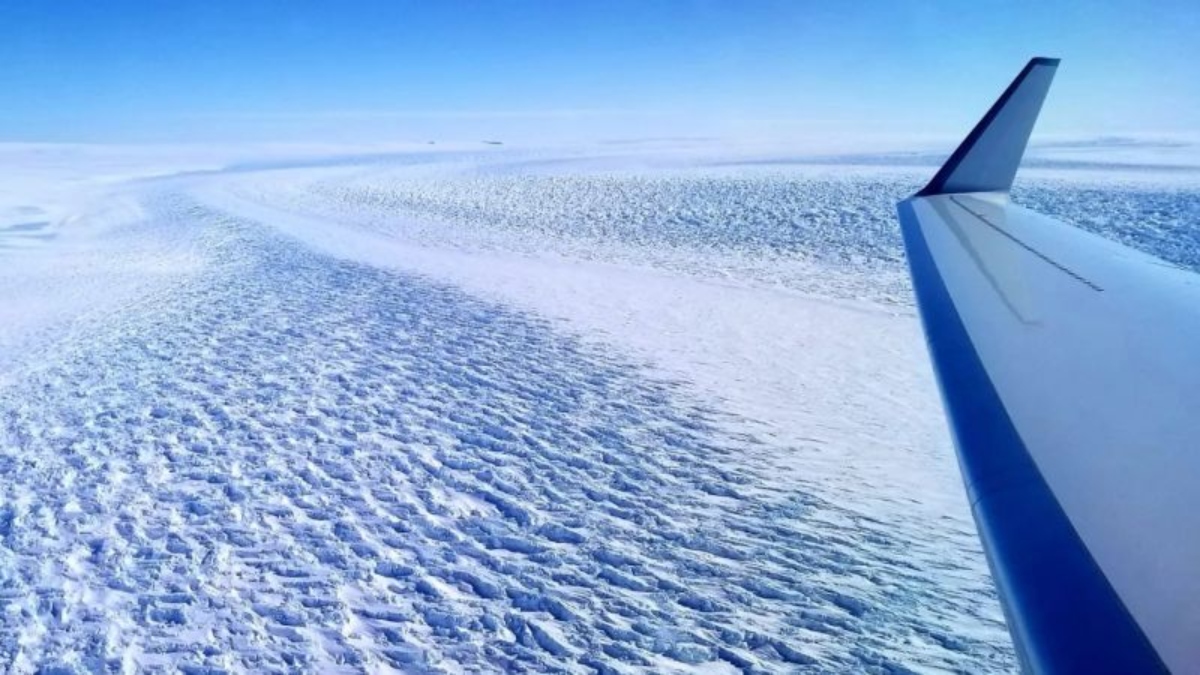(CNN) — An ancient landscape hidden beneath the ice sheet in East Antarctica at least 14 million years ago has been discovered, with the help of satellite data and aircraft equipped with ice-penetrating radar.
Scientists used remote sensing techniques to map 32,000 square kilometers of terrain, an area similar to that in Belgium. They discovered a landscape formed by rivers before the continental formation of the East Antarctica Ice Sheet, which once resembled the hills and valleys of modern North Wales, according to the researchers. A study published this Tuesday In the journal Nature Communications.
The researchers set out to trace the history of the ice sheet and its evolution over time, and understanding what the Earth was like before it disappeared under the ice sheets is an important chapter in that history, as explained by the study’s lead author, Stuart Jamieson. Professor in the Department of Geography at Durham University.
“The terrain beneath the East Antarctic ice sheet is less known than on the surface of Mars,” Jamieson said in a statement.
“And that’s a problem because this landscape controls the way ice flows in Antarctica, and it controls the way it might respond to past, present and future climate change,” he added.
The well-preserved nature of the landscape makes it particularly special. It’s rare to find relatively unchanged landscapes beneath a continental ice sheet: the movement of ice as it fluctuates in size and movements would typically erode and grind down archaeological landscapes, Jamison explained.
Ancient subglacial landscapes have been discovered within the Denman Glacier in East Antarctica, shown here.
What is under the ice of Antarctica?
Understanding why these ancient landscapes remain virtually unscathed could help scientists better predict the future dynamics of the East Antarctic ice sheet, which contains the equivalent of about 60 meters of potential sea level rise, as the planet warms.
According to the study, the Earth’s climate is about to reach temperatures typical of those the world experienced when the landscape arose between 34 and 14 million years ago, which were between 3 and 7 degrees Celsius higher than today.
The East Antarctica ice sheet first formed about 34 million years ago, but its size later fluctuated, sometimes exposing the ground beneath. According to Jamieson, the survival of the landscape means that temperatures at the base of the ice sheet were very cold and stable in these ancient masses of land, despite some intermittent periods of climate warming.
“In other areas, we would expect there to be liquid water, right between the ice and the bottom, helping to grind things up. In our case that is not the case. This would partly explain how something managed to survive for so long,” Jamieson said in Phone interview.
Geophysical data collected by scientists provided clues about what was underneath the two-kilometre-thick ice.
“(The data) measures very small changes in the shape of the upper ice sheet, and when we look at it and plot it, it looks like a series of interconnected valleys that must be underneath the ice sheet. We’re basically looking at the ghost of this view from above,” Jamieson said.
The research team does not know what plants and animals may have inhabited the area, but the presence of rivers indicates the presence of running water, so it is very likely that the landscape had plants.

“Proud web fanatic. Subtly charming twitter geek. Reader. Internet trailblazer. Music buff.”

:quality(85)/cloudfront-us-east-1.images.arcpublishing.com/infobae/TEQF6EONZRFGLLLDIDD4L2O4EE.jpg)

:quality(75)/cloudfront-us-east-1.images.arcpublishing.com/elcomercio/XU32LRAEZFDDPNVHLFU3CKVBYY.jpg)



More Stories
How to create 3D videos with my iPhone, it will be very useful even for your business
NASA discovers an anomaly in the Earth’s magnetic field that could have serious consequences for humans
Can the Earth be divided into two parts?